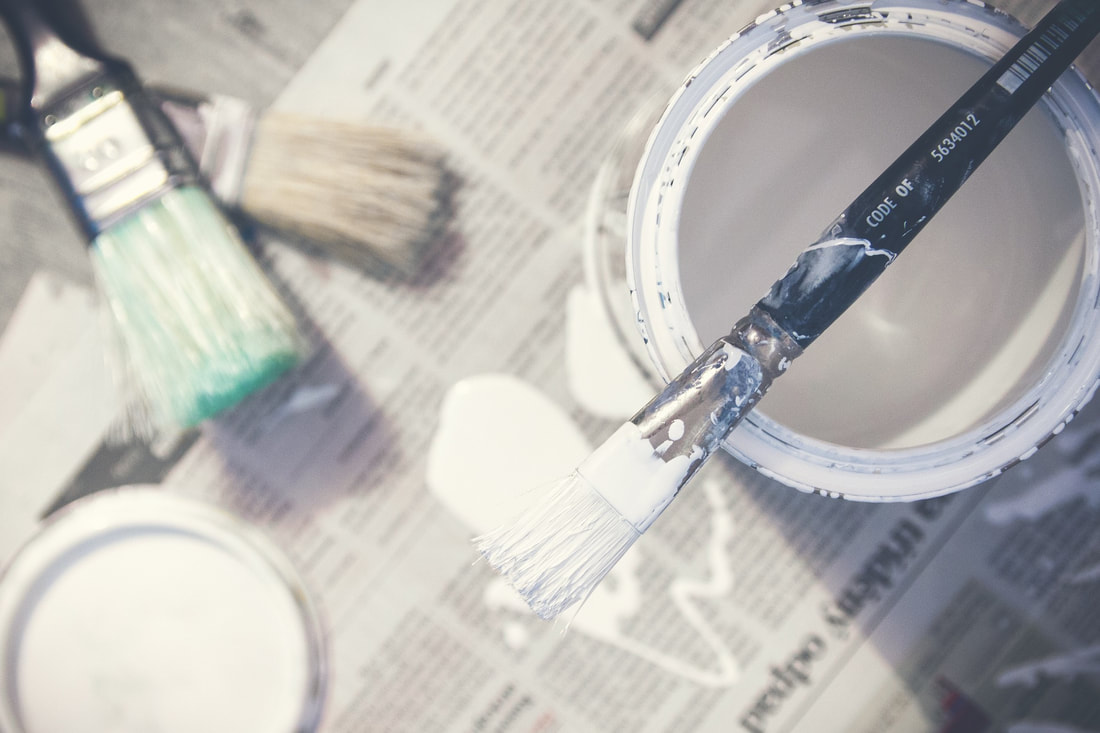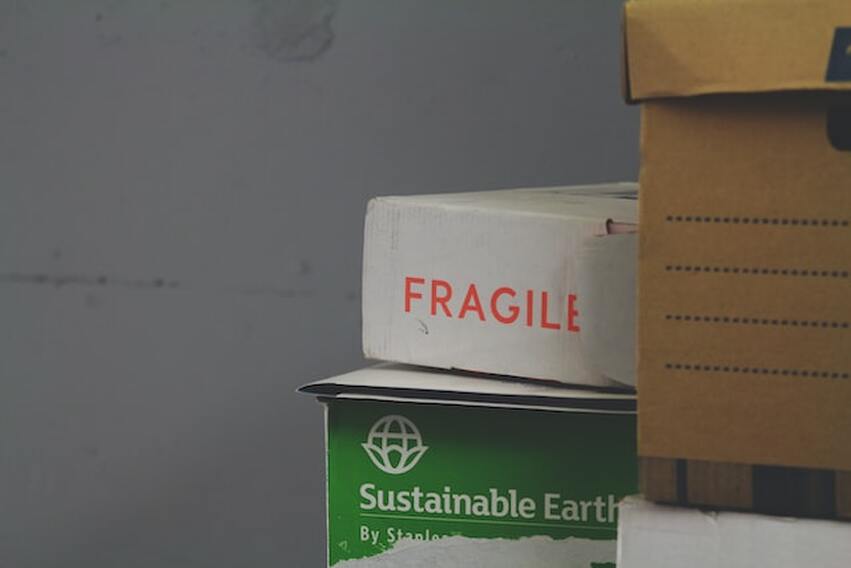|
Image courtesy of Pexels By: Lynn Ettinger Not feeling like a big spender these days? Check out the rewards of small home improvements.
How can myths sound so right yet still be wrong? Take the one that says homeowners need to do a big remodeling project (think HGTV gut rehab) to get a worthwhile return on investment or happiness. Not necessarily, according to the most recent National Association of REALTORS® “Remodeling Impact Report.” The survey found that homeowners can get payback and joy from several smaller, lower-dollar-value home improvement projects. That’s good news for the one in five millennials and Gen Xers who had to compromise on the house they bought in 2021. Ditto for potential buyers whose offers were rejected and who are staying put for now. If you’re coping with inflation but eyeing a home improvement, a smaller remodel is worth considering. Small projects are suited to DIY, which can save you cash. NAR research showed that 10% of young millennials, between 23 and 31, want a fixer-upper home where they can work on DIY projects. The supply chain is also cooperating, as some products used in renovation are coming back into the market. Of course, kitchen and bathroom makeovers will always have a place in our hearts — if not our wallets. The following five high-performing projects listed in the NAR report are less expensive — though admittedly less exciting — options. But then again, there’s nothing woo-hoo about your scratched and dinged hardwood floors or having your utility bills outpace your grocery bills. #1 Hardwood Flooring Refinish or Replacement “Interest in hardwood floors was definitely the headline from this year’s report,” says Jessica Lautz, vice president of NAR Demographics and Behavioral Insights. In fact, refinishing hardwood floors grabbed the top spot for interior remodeling projects that bring the highest return. Remodelers estimated the cost at $3,400, and REALTORS® estimated the value recovered at $5,000, a whopping 147% return. Consumers gave the project a joy score of 10 out of 10. On top of that, 100% of consumers surveyed said they want to be at home more after finishing the project. For 64% of consumers, the most important benefits were durable and lost-lasting results and materials. “With hardwood floors, you get a lot of bang for your buck, and they’re not that expensive,” Lautz says. “And people really like them.” Postpandemic, homeowners are still concerned about cleanliness, and hardwood floors are relatively easy to clean. Plus, with increased pet adoption, homeowners prefer surfaces that are less likely to stain or retain odors. Refinishing makes sense when everyday life has left scuffs, dents, dullness, and scratches — all unwanted reminders of spills, accidents, dragged furniture, and ground-in dirt from foot traffic. Your options for refinishing will depend on whether the coating or the wood itself is damaged. The deeper the damage, the higher the refinishing cost. New wood flooring snagged the second-highest score for interior projects, with a $5,500 cost and a $6,500 cost recovery, netting 118% in value recovered. Although it’s a bigger investment than refinishing, new flooring will let you opt for the hardwood and finish you prefer. And that will affect the floor’s durability and appearance. #2 Insulation Upgrade Buyers want to cut their energy costs where they can, Lautz says. “We see consumers who want a home that’s energy efficient. They want their utility costs cut and efficient heating and cooling. But the typical home they’re purchasing is 29 years old and quite dated. So, it may not have good insulation.” Making this home improvement could factor into more than comfort level and energy prices by appealing to buyers when you’re ready to sell. In a survey of REALTORS®, 63% said promoting energy efficiency in listings was very or somewhat valuable. That’s in line with preferences of home buyers, who ranked the importance of heating/cooling and insulation at seven out of 10. If you’re still on the fence, consider that an insulation upgrade, at an average cost of $2,500, is relatively inexpensive. And it recovers $2,500 for a break even. The joy score of 10 is worth shouting about. You can tackle an insulation upgrade as a DIY project; some can be done in a short 15 minutes. Installing certain types of insulation materials, like fiberglass and mineral wool, are especially DIY-able, according to the North American Insulation Manufacturers Association. But spray foam and some other insulation types require a professional. The Department of Energy offers advice too: The maximum thermal performance, or R-value, of insulation greatly depends on how well it’s installed. So, it pays to stick within your skill level. #3 Closet Renovation Consumers surveyed took on a closet upgrade for two main reasons: to add features and improve livability, and to improve organization and storage. This update averaged $6,000, costing more than some of the other smaller projects. But the cost recovery was substantial, at $5,000, or 83%. On the satisfaction side, more than three-fourths of consumers (79%) said that now that they’ve remodeled, they want to be at home more. Almost half said the most important result for them was greater functionality and livability. And the joy score? Another perfect 10. Closets are using something like a Legos approach when remodeled, according to the pros. “You take the basic building blocks — like drawers, hangers, hampers, shelves — but you use them differently and add to them,” says David Cutler, president of The Closet Works in Montgomeryville, Pa. “People want storage for their particular needs. If you have 100 pairs of shoes, you need creative ways to deal with shoe storage: shoeboxes, slanted shoe shelves, straight shoe shelves, shoe cubbies.” #4 Add or Upgrade Laundry Area Laundry wrangling is more of a chore if you don’t have enough work space or you’re missing certain features, like a countertop or a sink. Consumers in the survey said they focused on laundry room improvements to add features and improve livability or because they had just moved into their home and wanted to customize it. Sixty percent said the most important result was better functionality and livability, so they met their goal. The overall joy score was 9.5. Laundry room remodeling costs $4,000 to $12,000, according to FixR. Why the broad range? Laundry rooms can be located in different parts of the home and vary in size and shape. Most people pay around $7,000 for a 35-square-foot laundry room that includes mid-range upper and lower cabinets, a laminate countertop, and front-loading appliances, FixR says. Of course, you can upgrade an existing laundry room or space by adding à la carte features. Popular add-ons include stock or custom cabinets, a sink, countertops for work space, good lighting, and durable flooring. Some of the fancier options include units for hanging wet items like T-shirts so they can drip into the sink and racks that pull out of drawers for drying fine woolens, Cutler says. Don’t forget about small DIY improvements — like painting walls or cabinets and adding lighting. They’ll help you customize the space so you might almost enjoy doing laundry. #5 Paint One Interior Room Painting an interior room is one of the most DIY-friendly small home improvement projects. There’s nothing like it to freshen a room or fix a quirk or two. More than half of the consumers in the survey chose it because they wanted a change. And more than a quarter wanted to upgrade worn-out surfaces, finishes, and materials. Most of us fit into one or both of those groups, right? Beauty and aesthetics were the most important results consumers mentioned. And the joy score? 10. Hiring a professional to paint a room costs $990 to $1,320, according to FixR. The variation stems from the type of room and its square footage, plus the type of finish. With practice and a little advice, even a novice DIYer can get great results. If you’re stuck on what colors to pick, there’s more advice out there than you can shake a paintbrush at. Most major paint manufacturers have released a color or palette of the year for 2023. If you want to follow your own preferences but would like a little guidance, you can get tips about how to choose complementary colors you’ll like over the long term. The NAR remodeling survey also includes info for the big projects, like bathroom and kitchen renos, and basement and attic conversions to living areas. But depending on your priorities and budget, a smaller upgrade may make you happy and bring a healthy return.
0 Comments
Article by Crystal Mayer | GoBankingRates Featured Expertise by Jason Gelios Buying a house is one of the largest transactions you will ever make. The entire process can be overwhelming and filled with uncertainty. If you have never purchased real estate before, it can be downright terrifying.
While rates are high, the housing market remains competitive in some areas. Potential buyers may face bidding situations that can make it difficult to get the house of their dreams. We asked real estate agents from around the country for the best tips and tricks for first-time homebuyers. Here is what you need to know before making an offer on a home, according to our experts. Article by Sally Norton In the case of relocating, mistakes to avoid when moving long distance exist. One of the biggest mistakes is not properly planning ahead. This can lead to things like forgetting to pack essential items. Also, not having enough boxes or other moving supplies and not arranging for the appropriate moving truck or container size. It's also necessary to research and compare the costs of different moving companies and budget for all other expenses associated with a long-distance move. It also depends on the person's experience, whether they have moved before, and how they will deal with the situation. Finally, people often underestimate the time and effort required for a long-distance move. Therefore, it's essential to be prepared for the challenges that come with it. By focusing on the critical aspects of the move, you should not encounter any difficulties or mistakes. Not doing your new location's research It's a good idea to do some research on your new location before you move. That way, you can get a sense of the area and make any necessary arrangements. This might include finding out about schools, hospitals, public transportation, and local amenities. You can use this opportunity to get to know the local community. Also, to learn about any special events or activities that might be happening in your new area. By doing your research, you can help make your transition to your new location smoother and more successful. One of the mistakes to avoid when moving long distance is not having a plan A moving plan helps you stay organized and on track during the moving process. It can help you figure out what needs to be done so that you can make the most of your time and resources. It can also help you anticipate potential problems and develop solutions in advance. That can save you a lot of stress and hassle on moving days. There are many more reasons not to fear relocation than to be afraid. In short, a moving plan can help ensure your long-distance move goes smoothly and successfully. Failing to plan for a long-distance move can result in several problems. For one, you may forget to do essential tasks or do them at the last minute, which can cause delays and stress. You may also spend more money than necessary because you haven't thought through the best ways to save on your move. And, if you run into unexpected problems on moving day, you may not know how to deal with them effectively if you don't have a plan. Not having a plan can make your long-distance move more complex and less successful. Having a moving plan will keep you focused and organized while moving Carrying too many things when moving This is probably one of the most severe mistakes to avoid when moving long distance. This can lead to several problems, such as needing a larger and more expensive moving truck or container and making the relocation more physically demanding and time-consuming. Additionally, transporting too much stuff can increase the risk of damage to your belongings during the move. Finally, having too much stuff can make it more difficult to unpack and settle into your new home. To avoid these problems, it's essential to carefully assess which items you need to bring with you and consider donating, selling, or otherwise getting rid of anything you don't need. This can help to make your long-distance move more efficient and cost-effective. Here are a few ways to deal with taking too much stuff when relocating:
Don't forget to take care of your pets If you have them, your pets are also part of the entire move. Moving long distance with pets requires special attention to them. To prepare pets for a long-distance trip: 1. Start by getting them used to being in a carrier. 2. Take them for short car rides in the carrier and gradually increase the length of the rides. 3. Make sure their carrier is large enough for them to move around in. 4. Line it with blankets or towels to make it comfortable. However, you should prepare them for the trip, nothing less than you prepare yourself. You should also ensure your pet is up-to-date on all their vaccinations and consider getting them a health certificate from your veterinarian. And be sure to pack any necessary items, such as food, water, medications, and toys, to keep your pet happy and comfortable during the trip. You need to prepare the pets in the right way Failing to declutter your belongings Before you move, take some time to go through your belongings and get rid of anything that you don't need or use. This will save you money on packing materials and moving costs. It will also make it easier to settle into your new home. Plus, getting rid of unnecessary items can be a great way to reduce stress and make the moving process more manageable. To declutter, you can start by going through each room and making a pile of items that you want to keep, donate, sell, or throw away. You can then go through the piles and make more refined decisions about what to keep and what to get rid of. By decluttering, you can make your move easier, cheaper, and more organized. Choosing the right moving company Moving long distance can be a big undertaking, and it's essential to have enough help to make it go smoothly. This might include hiring a moving company, recruiting friends and family to help, or hiring professional movers to help with heavy items. Choosing the right moving company is essential when moving long distance because it can make a big difference in the overall success of your move. A reputable and reliable moving company can provide experienced and careful movers. Moving experts from centennialmoving.ca suggest that you should conduct long distance moves with minimal stress. On the other hand, a poor-quality moving company can cause problems such as lost or damaged items and unprofessional or unreliable movers. To avoid these problems, it's essential to carefully research different moving companies and choose one that has a good reputation and a history of satisfied customers. This can help to ensure that your long-distance move goes smoothly and successfully. Not securing your valuables When moving long distance, protecting your valuable items from loss or damage is essential. This might include packing them carefully using sturdy boxes and padding. Also, mark them with "Fragile" labels. It would be best if you also considered purchasing insurance for your valuables, as this can provide financial protection in case of loss or damage. The most important thing is that there are ways you can protect your belongings during your long distance relocation. Additionally, you might want to consider transporting valuable items yourself if they are extremely valuable or irreplaceable. By taking these steps, you can help ensure that your valuable items arrive at your new home safe and sound. One of the mistakes to avoid when moving long distances is not securing your belongings properly. If you are wondering if you need essential boxes...
Failing to pack an essentials box can result in inconvenience on moving days. It is known that the most common causes of irritation are when you don't know where you left certain things. Pack a box of items needed immediately upon arriving at your new home. When moving long-distance, it's a good idea to pack a box of essentials that you will need immediately upon arriving at your new home. This might include toiletries, towels, bedding, snacks, and a change of clothes. By packing this box ahead of time, you can save yourself time and hassle on moving day. For example, you can grab your essentials box instead of rummaging through your containers, looking for toothpaste and a towel. And you'll have everything you need at your fingertips. Additionally, having this box packed and ready to go can help you feel more settled and comfortable in your new home right away. Overall, packing an essentials box is a simple step that can make a big difference in the moving process. In conclusion Everyone who encounters moving for the first time knows that it is a demanding task, especially regarding long distance moves. In order to reduce stress as much as possible, it is necessary to know the mistakes to avoid when moving long distance. In addition, the organization and planning of the move itself will save you a lot of trouble. Moving companies are a huge help in such situations. Although moving is a stressful and challenging task, it is part of a new beginning. With dedication and invested effort and time, you will enjoy everything achieved. By avoiding the mentioned mistakes, you will contribute to the success of your move. Article by Alaina Tweddale Image courtesy of Pexels Wintry weather is great at turning up problems you didn’t even know you had. Like that first snowy night in front of your fireplace that you thought was pure bliss — until you noticed a leak in the ceiling corner. Apparently it was caused by a lack of insulation. How were you supposed to know that?
Here are seven things to do now to avoid costly wintertime mistakes: #1 Buy a $3.50 Protector for Your Outdoor Faucet The cost if you don’t: Up to $15,000 and a whole lot of grief. It’s amazing what a little frozen water can do damage-wise. An inch of water in your basement can cost up to $15,000 to pump out and dry out. And yet it’s so easy to prevent, especially with outdoor faucets, which are the most susceptible to freezing temps. The simplest thing to do is to remove your garden hose from your outdoor faucet and drain it. Then add a faucet protector to keep cold air from getting into your pipes. They’re really cheap (some are under $3.50). “Get these now,” says Danny Lipford, home improvement expert and host of the “Today’s Homeowner” television and radio shows. “When the weatherman says, ‘We’ve got cold coming,’ they’ll sell out in minutes. While you’re at it, make sure any exposed pipes in an unheated basement or garage are insulated, too, or you’ll face the same pricey problem. Wrap pipes with foam plumbing insulation before the weather drops. It’s cheap, too, just like the faucet cover (about $1.80 for six feet of polyethylene insulation). And it’s an easy DIY project, as long as you can reach the pipes. #2 Add Insulation to Prevent Ice Dams The cost if you don’t: $400 to $600 — if you’re lucky; a lot more if you’re not. Those icicles make your home look so picturesque, you just gotta take a few pics. But you better make them quick. Those icicles can literally be a dam problem. (Yes, dam — not the curse word that sounds the same.) Icicles are a clear sign that you’ve got an ice dam, which is exactly what it sounds like: a buildup of ice on your gutter or roof that prevents melting snow and ice from flowing through your gutters. That’s really bad news because these icy blocks can lead to expensive roofing repairs. Depending on where you live, expect to pay at least $400 for each ice dam to be steamed off. Leave the ice and you risk long-term damage. That could add up to hundreds or even thousands of dollars in repairs your roof, depending on what type of shingles you have and the size of the damaged area. How to prevent them? Insulation. “Ice dams, icicles, and ice buildup on the gutters are symptoms of not enough insulation in the attic,” says Chris Johnson, owner of Navarre True Value and several other stores in the Twin Cities area. “You need to have at least 14 inches of insulation in your attic, no matter where you live,” says Lipford. If you live in a colder climate, you’ll need more. If you don’t have the cash to insulate, a less expensive alternative is heated gutter cables, which run between $59 and $144 each. They can be temporarily affixed to areas prone to ice damming, Johnson says. #3 Clean Your Gutters The cost if you don’t: You really don’t want to be in a position to find out. It can be so tempting to skip gutter cleanups as winter nears. It seems as soon as you clear your gutters, they clog right back up again. So what’s the point? Well, if it looks like you’re living inside a waterfall when it rains, water is completely missing your gutter system. It’s being directed to your foundation instead. And a water-damaged foundation is never, ever cheap to fix. A contractor can plug foundation cracks for $350 to $4,000, says FixR. But a worse problem, one that requires a foundation excavation or rebuild, can set you back as much as $25,000. Suddenly, cleaning your gutters a few times each fall doesn’t seem so bad. A pro can do the work for $200 to $400, depending on the size of your gutter system. #4 Seal Up Leaks The cost if you don’t: Nights where you never feel warm, despite sky-high heating bills. “If it were possible to take every crack on the outside of a typical home and drag them together, you’d have the equivalent of a three-by-three window open all the time,” says Lipford. Yikes. Yet cracks can be easily and inexpensively sealed with a simple tube of caulk, and it’s available in hundreds of colors to match your window panes, outside siding, and even brick. Not sure where to caulk? Look for visible cracks around:
#5 Program Your Thermostat The cost if you don’t: Money you could spend on something else besides heating. We all know we should program our thermostats to align with our schedules, but we seem to have some mental block when it comes to doing it. It’s not that hard, and sometimes all it takes is buying a new one that suits you (like maybe a Wi-Fi one that’ll give you a little money-saving thrill each time you swipe your app). “From a cost-savings perspective, a programmable thermostat is a great investment,” Lipford says. You can save as much as 10% a year on heating and cooling by simply turning your thermostat back 7 degrees to 10 degrees Fahrenheit for eight hours a day from its normal setting, according to the U.S. Department of Energy. #6 Get a Furnace Tune-Up The cost if you don’t: A furnace that’ll die years before it should — and higher energy bills. “Forget to service your furnace and you could easily cut five years off the life of your system,” says Lipford, adding that five years is a full third of the typical unit’s life span. New units can cost $2,000 to $11,000 installed, making the $100 to $200 annual maintenance charge a no-brainer. While you’re at it, don’t forget to replace the furnace filter, which cleans the air in your home. It also keeps your furnace coils cleaner, which can shave up to 15% off your energy bill. Johnson suggests replacement at least every three months, but possibly as often as monthly if you have allergies or pets, or smoke cigarettes at home. #7 Get a Fireplace Inspection The cost if you don’t: Possibly your life — and your home. “A cozy fire is great, but if you don’t maintain your chimney, a fire can cost you thousands of dollars,” says Johnson. Not to mention the risk to you and your family. Schedule your maintenance appointment as early as you can. ”If you wait until the busy season, you’ll have a hard time getting them out there, you’ll pay more, and you’ll get a lower quality job,” says Lipford. Quick-and-easy tasks that’ll brighten up your interior.
The year’s coming to an end. Time to do four small tasks for a bright (and money-saving) new year. #1 Clean Light Bulbs and Fixtures Two great reasons to clean your light bulbs: You want as much light in your house as you can get as the days grow shorter, and, you’ll save money. Dirty bulbs apparently shed 30% less light than clean ones, according to the U.S. Department of Energy. Wipe bulbs with a cloth dampened by a mix of 1 oz. dish soap, ¼ cup white vinegar, and 3 cups of water. Get to it Dec. 1 so you’re ready for the curtain fall on the shortest day of this year: Dec. 21. #2 Evaluate Homeowner’s Insurance The holidays. You love them, but they do seem to eat up more cash than other times of year. Sure, you can scrounge around for change under your couch cushions, but that’s not going to offset much. Why not get a home insurance checkup? Call your agent to go over the type of coverage you have, how much you really need, and how you can lower your premiums before your next monthly installment. #3 Pack a Home Emergency Kit The last thing you want during the holidays is for an emergency to chill your family’s cheer. Prepare for power outages and weather-related emergencies with an easy-to-find emergency kit. Some items to include are bottled water, a hand-crank radio, a flashlight, batteries, a portable charger for your phone, warm blankets and, of course, a first-aid kit to patch up any boo-boos. Singing carols ’round the flashlight may not be ideal, but it’ll beat trying to celebrate in the dark. #4 Buy Holiday Lights (After Dec. 25) It’s tough to think about next Christmas when you’re still stuffed from a holiday dinner with all the trimmings. But think you must if you want to save on next year’s holiday. From Dec. 26 through year’s end, big-box stores try to clear the shelves of all that glitters. Article by Erik J. Martin | The Mortgage Reports Featured Expertise by Jason Gelios 7 min. read What to expect from the 2023 housing market
Everyone knows 2022 was a rough year for home buyers. Interest rates more than doubled over the course of the year while housing prices only continued to climb. But the tides are beginning to turn. Buyers have gained more leverage as homes sit on the market longer. And mortgage rates ticked back down in November and December. Will things keep looking up in 2023? Or could the market overcorrect, leading to a crash? Here’s what buyers and homeowners can expect in the new year. |
AuthorJason Gelios is a Husband and Father. After that, a Top Producing REALTOR®, Author of the books 'Think like a REALTOR®' and 'Beating The Force Of Average', Creator of The AskJasonGelios Real Estate Show and Expert Media Contributor to media outlets across the country. Archives
July 2024
Categories |














 RSS Feed
RSS Feed